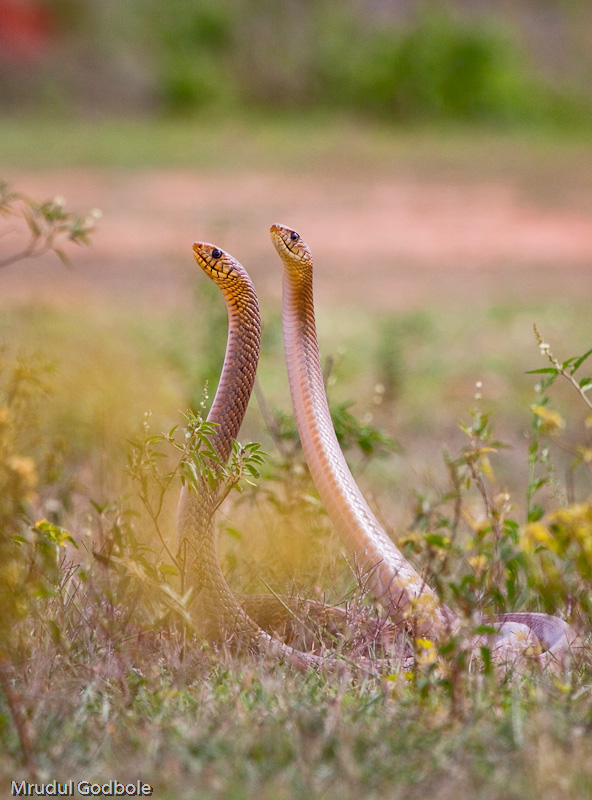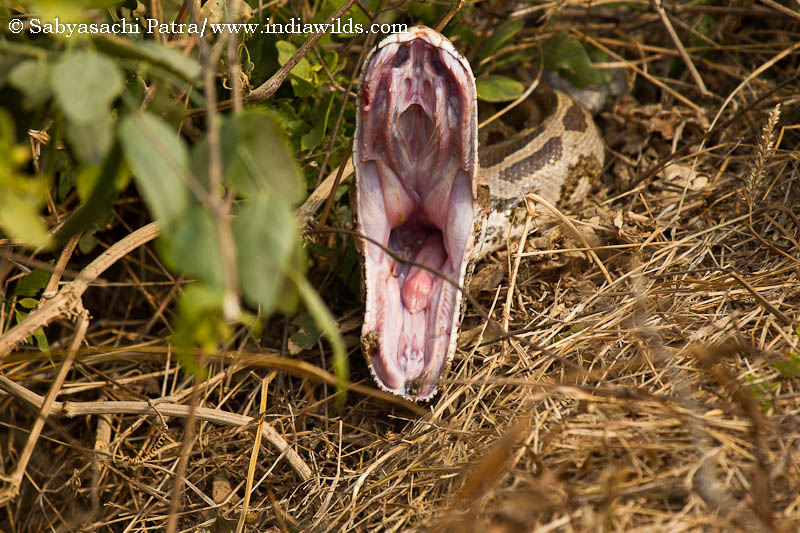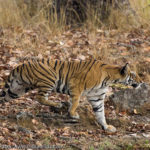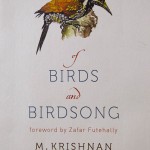Legalise War on Wildlife?
The Homo sapiens are at war with wildlife. Earlier it was a covert operation where by large dams, canals, power projects, roads, cities etc were built after clearing wildlife habitat. There are some organised gangs that poach wildlife for its skin, bones and other body parts. With the population explosion and the increased urbanisation due to need and greed is leaving no space for the wildlife.
Our forests are fragmented, and with our proclivity to concretise every available space, there is no chance for wildlife to take cover.
This results in an animal moving from one forest patch to the other increasingly difficult as they can’t conceal themselves. When an animal is spotted, immediately there is pandemonium all around. The poor animal which is on its way loses its sense of direction and tries to flee in whichever direction there is less crowd. The fate of the animal is sealed. People throw stones, fire bullets, beat it up with sticks and soon it is dead. Al Jazeera footage of a tiger being hacked: http://www.youtube.com/watch?v=A7TG4SIy3dg
Culling:
Now a bunch of wannabe conservation media professionals want to take this a bit further. They want to legalise slaughter of wildlife to control the population to a “manageable” number. They want to take the example of elephant culling from a few African countries and want to do the same for our herbivores and carnivores in India. The reason given is that due to “development” (read urbanization) activities being carried out, there is less space for wildlife and so their population need to be controlled. The argument is that herbivores come out of the forest and eat and damage the crops. An article in Tehelka, proclaims that crop depredation by wild animals is the single biggest challenge to livelihood of farmers citing 17,725 cases of crop damage between April 2010 and February 2011. (Tehelka Vol. 9 Issue 07, Dated 18 Feb 2012). While the call for “culling” wildlife is an outrageous idea and doesn’t require a comment, nevertheless, one can check a discussion in IndiaWilds by checking this link:
(http://indiawilds.com/forums/showthread.php?t=574)
It would be pertinent to quote the Late Billy Arjan Singh “A wildlife management ploy, which is of immense harm to wildlife, is culling. Managers maintain this is essential in certain cases to maintain the biomass population in relation to the habitat available, and in preventing population pressures from degrading the habitat. In other words, the human has arrogated to himself the task of adjusting the wildlife population to the forage available in a given area. In these days of habitat reclamation for human use, this places an unwarranted onus on the human species, which, as we have already seen, is singularly unqualified to deal with population control“.
“Wild animals are eminently adaptable, and if certain ungulates overgraze the forage they have been used to, they will opt for other forms of life maintenance. Browsers may become grazers, and other sources may be discovered. The hardground swampdeer of Madhya Pradesh are genetically the same as the marsh inhabitants of Kaziranga. The sambhar, supposed to be solitary inhabitants of dense forest, now gregariously feed on water plants in Ranthambore, like the barasingha. Wild elephants propagate trees from the seed pods they ingest. When they cannot strip bark from trees, they switch to a diet of grass. Yet in Africa it is maintained that they have destroyed and are destroying their habitat, and should be culled for their own good. This reprehensible idea is implemented by the slaughter of entire herds of Zimbabwe, and is a crime against laws of the universe as ordained by nature. These insensate massacres are a greater offence than that of a country like Japan, which may illegally smuggle ivory, but those artisans have never seen an elephant“. (For other key messages of Billy Arjan Singh one can check here:
http://www.indiawilds.com/diary/indiawilds-newsletter-vol-2-issue-i/)
Infact, recent research suggests that culling has a huge negative impact on the wildlife. The errant behavior of adolescent elephants in killing rhinos, tearing down huge trees etc in Africa was found to be due to the trauma they suffered when adult elephants from their herd were shot dead. In the US it has been reported that when adult cougars were killed, their place is taken by young ones. Whereas the adults had lived in close proximity of humans and have rarely been observed, the young ones have been attacking humans. Perhaps, the young ones need a calming influence and guidance of the adults in their growth stage as we certainly do.
Rodents pose bigger Challenges than wild herbivores:
In a world where big always appears to be better, we always try to do a quick fix solution like killing the bigger animals like deers, sambars, wild boars, Nilgais etc rather than looking at the root cause of the problems. It is often overlooked that small rodents cause the maximum damage to food grains. Rodents eat about 10 per cent of agricultural production. (Advani, Ranjan, “Rodent Damage to Various Annual and Perennial Crops of India and Its Management” (1987). Great Plains Wildlife Damage Control Workshop Proceedings. Paper 47) According to Grant Singleton, Rodent Expert of International Rice Research Institute “In Asia, rodents cause, on average annual preharvest losses of 5-10% in rice crops. A loss of 6% is substantial as this is enough rice to feed 225 million people for a year.” (Rice Today October-December 2009). However, people are nearly oblivious to such huge damage caused by rodents and only when there was an outbreak of plague in Surat in 1994 people started talking about rodents.
Rodents also create havoc and have been the cause of famine and armed uprisings. A massive famine struck Mizoram in 1958 and it is said that several thousand lives were lost. This followed the bamboo flowering which happens every 48 years. After flowering the bamboo dies and the rodents feast on the seeds and give birth and increase their numbers exponentially. After the seeds are devoured, the increased number of rodents devastate the crops. This famine had serious implications with the birth of Mizo National Famine Front leading to insurgency which finally got resolved with the birth of Mizoram as a State of India.
In 2006 bamboo (melocanna baccifera species) started flowering in Mizoram and in 2007 the Agriculture department of Mizoram had stated that atleast 6,683 hectares of jhum (shifting) cultivation land in seven districts were impacted by rat infestations.
The rodents have rapid rate of reproduction, the overall damage caused by rodents is phenomenal. Rats attain sexual maturity by 5th week and their gestation period is around 21-23 days. Since rats come on heat ie. Post partum estrus after 10 hrs, they can become pregnant during that time. In times of abundant supply of food like bamboo flowering, one pair of rats can technically multiply to 759122 in twelve months’ time. In normal conditions, assuming only 6 litters per year and a smaller number per litter, a pair of rats can multiply to 31250 in a year. (Source: IndiaWilds Model)
When rodents can cause such huge impact including changing the socio-political scenario and causing armed conflicts thereby inflicting so much of pain and misery on people, is it not time for us to focus our energy more on them? That will cause less of wastage of agricultural products and will then hopefully result in less area going under cultivation.

Rat snakes jostling with each other for dominance on the outskirts of a village
Biological Control of Rodents:
One of the major reasons for the explosion of rodent populations in the towns and cities is the lack of predators. Except for the domestic cat, the other predators need to have a suitable habitat for them.
Birds like Owls are mercilessly hunted due to superstition and black magic. Though a barn owl is considered as the vehicle of Maa Laxmi, the Goddesses of wealth, owls are hardly seen due to habitat loss and hunting. In most of the places, old dead trees are cut off, depriving owls and a number of others species of their habitat.
Similarly increased concretisation and lack of trees is leading to less of predatory birds. One can still find an occasional Shikra or a Black-shouldered kite. However, finding Kestrels, Merlins, tawny eagles etc due to loss of grass lands and wetlands is becoming increasingly difficult.
Apart from the poisonous snakes like Cobra, Viper, Krait, the non-poisonous snakes like rat snakes are very effective in containing the rodent population.Snakes are the major predators of rodents. So one can find more snakes in the villages and towns than in the forest. The traditional house construction used to favour the snakes going about their business of catching rodents in the attic. With the modern concrete constructions, it has become difficult for the snakes to penetrate the houses. In case a snake gets into, it has become difficult for them to get out without getting killed.
Pythons too regulate the rodent population effectively (Whitaker and Bhaskar 1978).

Pythons too regulate the rat population effectively
Unfortunately, people have waged a war on snakes due to their fear arising out of ignorance. So much is the ignorance that despite thousands of years of co-existence our villagers hardly know a thing or two about snakes. It is only natural that a lot of people have morbid fear of snakes.
In the book ‘Snakes of India – The field Guide’ by Romulus Whitaker & Ashok Captain, Chapter Snakebite and anti-venom:
“Snakebites are rare where people know about snake habits and learn how to avoid encounters. Snakes usually flee when humans approach, but are sometimes cornered or tread upon and that’s when they may bite in self-defense. Fortunately most snakebites are by non-venomous snakes and the great majority (85-90%) of venomous bites are not life-threatening as the snake generally injects only a small amount of venom or no venom at all (a “dry” bite). However, a bite from any venomous snake must be treated as serious.”
Apart from snakes, animals like Jackal, fox, mongoose etc also predate on rats. Unfortunately our grasslands are vanishing and along with it are the jackals, fox etc.

Fortunately, mongoose can still survive in the parks and gardens, though they are hunted for their hair.

Other Conservation Articles and News:
An Article based on Road Kills study in Chinar and Aliyar in Anamalais by Wildlife Biologist R. Arumugam:
http://www.indiawilds.com/diary/road-kills-in-chinnar-road-and-aliyar/
(If anyone wants to contribute articles on wildlife and conservation, please mail to administrator@indiawilds.com)
Coimbatore Mayor Terrorises NGOs for stopping tree felling:
http://www.indiawilds.com/forums/showthread.php?t=9552
Unregulated Tourism ravaging Western Ghats:
http://www.indiawilds.com/forums/showthread.php?t=9539
Tiger presence confirmed in Mizoram
http://www.indiawilds.com/forums/showthread.php?t=9503
Forest Fires:
http://www.indiawilds.com/forums/showthread.php?t=9303
Tug of war for lions between Gujarat and MP
http://www.indiawilds.com/forums/showthread.php?t=9406
Kawal Sanctuary notified as Tiger Reserve
http://www.indiawilds.com/forums/showthread.php?t=9404
Empowering Women: Punjab recruits 42 women as forest guards:
http://www.indiawilds.com/forums/showthread.php?t=9469
Kerala Govt. to take over Cherunelli Estate
http://www.indiawilds.com/forums/showthread.php?t=9443
IndiaWilds Meet:
Please check the following thread for more details on the ‘IndiaWilds Meet’
http://www.indiawilds.com/forums/showthread.php?t=9447
Those who are interested can email for details to administrator@indiawilds.com
Wildlife Photography
Images shared by our members between March 10th 2012 and April 9th 2012 depicting either interesting behaviour, habitat, rare species or that are simply beautiful.
Humpback Dolphin leap by Abhishek Jamalabad
http://www.indiawilds.com/forums/showthread.php?t=9276
Blyth’s Reed Warbler by Deepak Ramani
http://www.indiawilds.com/forums/showthread.php?t=9243
Bee-eater by Mrudul Godbole
http://www.indiawilds.com/forums/showthread.php?t=9205
Montagu’s Harrier by Dipankar Mazumdar
http://www.indiawilds.com/forums/showthread.php?t=9119
Elephant Scapes of Nilgiris by Mohan Raj
http://www.indiawilds.com/forums/showthread.php?t=9351
Leaping Frog and the Ant by Bibhav Behera
http://www.indiawilds.com/forums/showthread.php?t=9176
Mango stem borer by Prasanth Sreenivasan
http://www.indiawilds.com/forums/showthread.php?t=9184
Weaver ants by Kaling Dai
http://www.indiawilds.com/forums/showthread.php?t=9141
I look forward to your inputs and your support in preserving the last tracts of wilderness and wildlife left in this beautiful country. For other interesting articles and photographs please check: http://www.indiawilds.com/forums/
All the newsletters can be found online at:
http://www.indiawilds.com/diary/category/newsletter/
In case, anyone of you has forgotten his/her user id and password can email the admin at the following email id administrator@indiawilds.com
Others may register at www.indiawilds.com/forums/register.php using your Full Name as user id.
Regards,
Sabyasachi Patra
www.indiawilds.com
Profile: http://www.indiawilds.com/profile.htm
Contact: http://www.indiawilds.com/contact%20us.htm
Facebook: http://www.facebook.com/pages/IndiaWilds/132629240481
Diary: http://www.indiawilds.com/diary/
Equipment reviews: http://www.indiawilds.com/diary/category/equipment/
Forums: http://www.indiawilds.com/forums/index.php
Channel: http://www.youtube.com/indiawilds
- GoPro Hero 12 Black - 6 September,2023
- Leopards: The Last Stand - 2 July,2023
- Drifting in the Waters of Sundarbans - 26 March,2023













I fully support you on your campaign against this practise.
It is due to the greed for land that by humans that we are seeing the animal – human conflicts. Left to themselves, animals would avoid man and as has been mentioned by Billy nature will regulate their numbers.
A number of experts feel that we have the mandate to regulate the activities of all species on the planet and to them I would say that the mandate we have is to manage and limit the unregulated growth of the number of humans. It is only this that can make our planet a better place to live in and minimize the human animal conflict.
More power to you!!
Cheers
Congratulations. Culling is a shortcut. It helps not to look at habitat quality, connectivity and proper protection against human activities.
But are we culled ourselves by the same process of management without principles: unsafe roads, pesticide ridden fruits, inadequate habitat, polluted air and water,…
In a way, this is ironical that we do to wildlife what we do to ourselves.